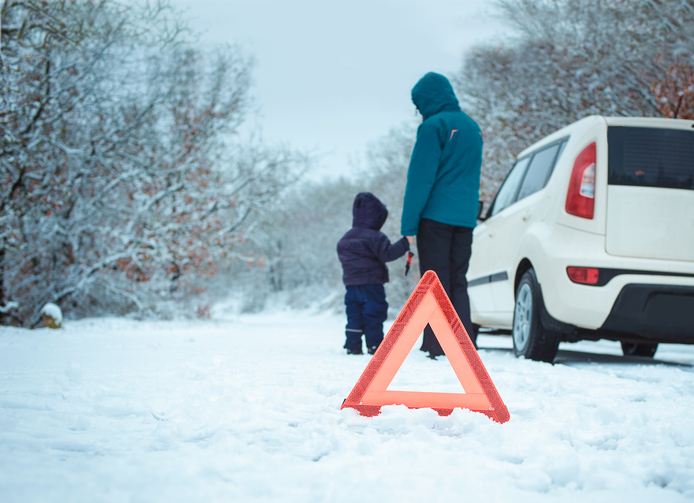
Here in Minnesota, we welcome the cold, dark, snowy days: it makes us who we are, proud to be able to not only survive but thrive in such a harsh environment.
One of the reasons we’re able to survive winter, however, is the knowledge that it can be dangerous. So dangerous, in fact, that many people die each year from exposure after getting stranded in their car.
Make sure you have a winter survival kit in your car. While many of these items should be in your car year-round, some are unique to winter travel.
The following list is what I’ve kept in my personal vehicle for many years. Have I used everything on this list? No, but I would rather have these items and not need them, than need them and not have them.
- A well-maintained vehicle: this is listed first because it’s the most important!
- Make sure your battery is in good condition
- Fluid levels are adequate
- Tires are inflated properly and have enough tread
- Make sure that windshield wipers, all lights, and heater work
- Keep your windshield washer fluid full, and between October 1st and March 31st, use only washer fluid – no water (it’s safe to use 100% washer fluid year-round). Keep both the inside and outside of your windows clean.
- Above all else, keep your fuel tank filled; try not to drop below a half tank.
- A charged and functioning cell phone: as ubiquitous as cell phones are, many people forget to grab them and think, “I’m just going to the store across town, I’ll be OK without the phone.” You can keep an older cell phone in your car just for emergencies: all cell phones in working order can access 911, even without a cellular plan. Just make sure you have a charging cord for that phone. And speaking of charging cords, keep extra cords for phones you don’t own, just in case someone that has a different type of phone is travelling with you and they forgot their power cord.
- Extra clothing items: Keep these clothing items in your vehicle. Make sure any passengers you bring along have adequate winter clothing, too.
- Heavy coat
- Extra gloves
- Winter hat
- Extra socks
- Winter boots
- A blanket: an extra blanket or two, or maybe a sleeping bag, can be a real help to maintain your body temperature. There are even blankets that plug into the car’s twelve-volt outlet, just make sure you don’t use them when the motor isn’t running, or you will find yourself with a dead battery!
- A good supply of handwarmers: these can be great for keeping your fingers and toes warm. They come in different sizes and shapes (some even fit inside your shoes). Keep a box of assorted sizes in your car for the most benefit.
- A flashlight: keep a small flashlight that runs on AA batteries. Keep lithium batteries in it – they withstand the cold much better than alkaline batteries, and last longer. Another great option is to also keep a headlamp in your car. That way, when you need to use your hands to do something, you can still have light.
- Drinking water: yes, water will freeze if it’s left in your car during the winter. Fill a bottle or thermos and take it with you when you travel. Extra bottles can’t hurt: if you get stranded, it could be several hours or even days before you are rescued. We dehydrate quickly in very cold weather.
- Snacks: high energy snacks are great to keep with you. Granola bars, nuts and dried fruit, and jerky all make good energy sources. Even candy bars can help keep your energy up, but more importantly, they are comforting.
- Glass breaking tool: these small tools are designed to shatter a car’s rear and side windows when your vehicle becomes submerged. They are inexpensive, small, and easy to use. Note: some newer cars no longer use tempered glass, so these tools are largely ineffective in those instances. Ask your mechanic what type of windows you have in your car.
- Jumper cables or booster pack: either are a great addition to your emergency kit. Look into which might be better for you. Jumper cables require another vehicle to get started. Learn how to use whichever you carry!
- Traffic safety vest: these are good when outside of your car near traffic. They can also be used as an emergency signal if you are in a remote area.
- Snow and ice scraper: get one that’s long enough to reach at least to the middle of your windshield. An extra ice scraper is always a good idea.
- A simple first aid kit
- Some other things you might consider if you have room:
- Tow strap
- Small shovel
- Traction aids (kitty litter, sand, traction devices)
Safe Travels!
